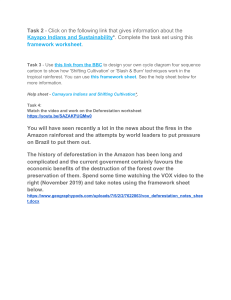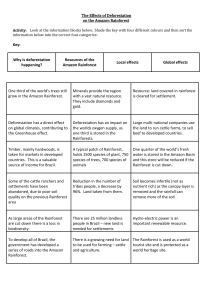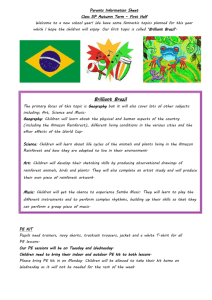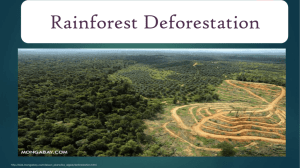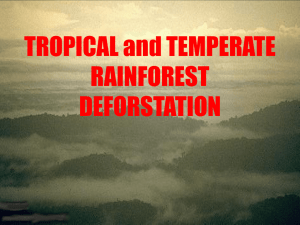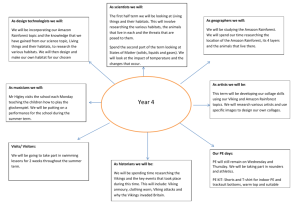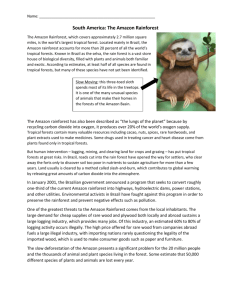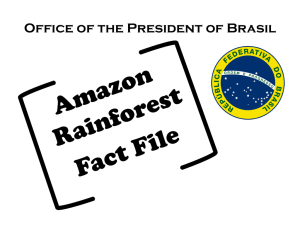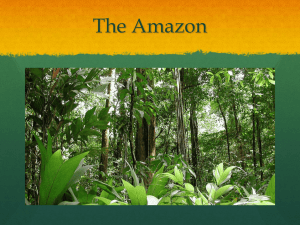Threats to the Amazon Rainforest
advertisement
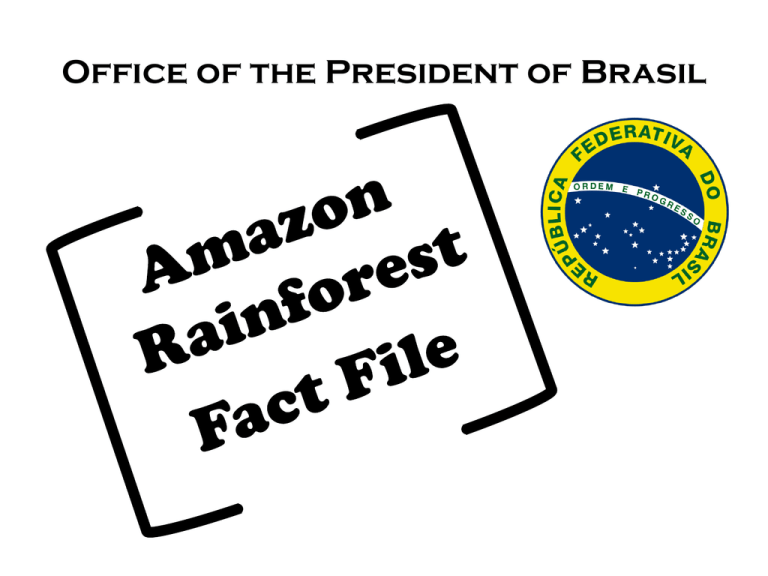
Office of the President of Brasil • By the end of this class…a part of the Amazon the size of 600 football fields will be lost to deforestation. • How does that happen? Deforestation • Deforestation has cost Brazil about 20% of it’s rainforest. • Deforestation occurs to get the Amazon’s timber (wood), land for farming, land for ranching, the resources underground, and land to live on. Commercial Farming Before someone can farm on rainforest land they must clear the land with “slashand-burn”: 1) Cut all the trees down 2) Burn the underbrush and tree stumps 3) Burned ground creates fertile soil that is good for agriculture. Brazil is the second LARGEST producer of soybeans in the world. ** Soy beans are used to make products like your lunch hamburgers! ** This land cleared for agriculture is not very fertile and lasts only 23 years and farmers have to move to other land and “slash-andburn.” Ranching • Brazil produces over 10 million tons of beef! (1 ton = 2,000 pounds) •Ranchers “clear-cut” the forest so their cattle have land to graze on grass. •For every quarter-pound hamburger eaten in the U.S. 55 square feet of the rainforest was cleared. Human Settlement • Commercial farming and timber companies built roads into the rainforest to get to their land. • Soon after people followed in search of their own land to start homes and small farms. Many grow into cities. • With increased urbanization comes air and water pollution and, of course, more deforestation. 13.5 million Brazilians live in the Amazon rainforest, 70% in urban areas. Mining The Amazon rainforest has a hidden wealth of natural mineral resources underneath it. Recently mining has taken off in search of: - iron ore gold oil diamonds What’s It All Worth? • Economic Boost – Beef Ranching = – Soy Agriculture = – Timber = – Mining (gold, iron) = $ $ $ $ 4 billion 9 billion 3.22 billion 44.8 billion $ 61.02 billion AND GROWING What’s Gone? • Since 1991 the size of the area deforested in the Amazon equals nearly the size of Texas. What’s At Risk? • Lost of indigenous peoples’ traditional way of life • Global warming through less trees • Loss of unique species of plants, animals, insects, reptiles, etc • Air and water pollution through the region • Destruction of an irreplaceable place on this planet
